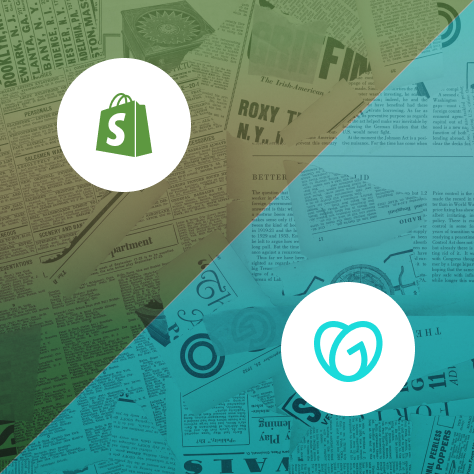What Are Post Purchase Upsell Pages?
A post purchase upsell page is a standalone page that appears immediately after a customer completes their checkout. It offers an additional product or upgrade before the final order confirmation is shown.
This is not the same as a thank you page. A thank you page typically confirms the order and provides shipping or account details. A post purchase upsell page, on the other hand, is a transactional step inserted between payment and confirmation. It allows the customer to accept an additional offer with one click, using the same payment method.
Unlike pre-purchase upsells or in-cart cross-sells, this step happens after the customer has already committed to buying. That timing makes it more likely the offer will be accepted, since there’s no added friction or risk of cart abandonment.
As ecommerce evolves, post purchase upsell pages have become a standard part of high-performing Shopify storefronts. They offer a way to increase order value without changing the core product or marketing strategy. 35% of Amazon's revenue derives from upselling and cross-selling strategies, highlighting the significant impact of these tactics across e-commerce platforms.

Five Strategies To Boost AOV
When an offer includes a visible countdown timer or limited-time messaging, it creates urgency. Customers are more likely to act quickly if they believe the deal will disappear. Incorporating countdown timers or limited-time messaging on post-purchase upsell pages can increase conversion rates by 15-28%, making urgency a powerful sales driver.
1. Time-Sensitive Offers
When an offer includes a visible countdown timer or limited-time messaging, it creates urgency. Customers are more likely to act quickly if they believe the deal will disappear.
Effective time-sensitive upsells use timers under five minutes and clear expiration language. Avoid generic phrases like “limited time only” and instead use precise language such as “Offer expires in 3:00.”
2. One-Click Acceptance
One-click upsells use the same payment method from the original order, removing the need to re-enter information. This reduces friction and keeps the customer in a purchasing mindset.
The confirmation action should be clearly labeled and placed above the fold. Avoid redirecting users to a new checkout page, which can break the flow and reduce conversions.
3. Social Proof
Displaying recent purchases or customer testimonials on the upsell page increases perceived trust. Real-time notifications like “Jess in Austin just added this” or short reviews help validate the offer.
Use dynamic content blocks that pull in product-specific reviews or ratings. Keep the layout clean to avoid overwhelming the decision with too much noise.
4. Personalization
Offers that relate directly to what the customer just bought are more relevant and more likely to convert. For example, if someone buys a camera, the upsell might be a memory card or lens.
Personalization can also be based on past browsing behavior or customer tags in Shopify. Use this data to match the upsell with complementary products, not just popular ones.
5. Split Testing
Testing different offers, layouts, and copy helps identify what works best. This includes experimenting with product bundles, offer timing, and discount levels.
Track performance using metrics like acceptance rate, additional revenue per order, and drop-off rate. Avoid changing multiple variables at once to isolate what’s making the difference.

Technical Setup For Shopify
Shopify allows post purchase upsell pages through its Checkout Extensibility framework. This framework is available to merchants using Shopify Plus as of April 2025. It supports post purchase pages as part of the checkout flow, placed between the payment step and the final confirmation page.
To create a post purchase upsell page, the store must use a checkout-compatible app that supports Shopify Checkout Extensions. The app must be installed from the Shopify App Store or custom-developed using Shopify’s Checkout UI Extension APIs. These APIs allow developers to build React-based components that render directly within the checkout and post purchase surfaces.
Post purchase offers are rendered using Shopify’s @shopify/post-purchase-ui-extensions library. The app defines the offer logic, product data, and UI elements inside an extension point called Checkout::PostPurchase::Render. This extension runs after payment is completed and before the order confirmation page is shown to the customer.
No changes to the theme code are required. The upsell logic is fully contained within the extension and controlled through the app's admin interface or API. The app handles the conditional logic, offer configuration, and order updates if the upsell is accepted.
Platter+ is an example of an app that can implement post purchase upsell pages without the need for a developer. It uses Shopify’s Checkout Extensibility system to integrate directly into the post purchase flow. Merchants can configure offers through the app UI without editing code or deploying custom scripts.
Once installed, the app registers the post purchase extension with Shopify and activates it in the store’s checkout settings. The merchant selects eligible products, sets targeting rules, and enables the extension. Shopify handles offer rendering, payment authorization, and order updates automatically.
Future Trends to Watch
As of April 2025, post purchase upsell strategies are adapting to more precise targeting and automation. One of the most significant developments is the integration of AI-driven recommendation engines that operate specifically within the post-checkout context. These systems analyze customer behavior in real time—such as cart contents, purchase frequency, and product affinity—to generate upsell suggestions shown immediately after checkout.
Unlike traditional rules-based upsells, AI models use transactional data and engagement history to adjust offers dynamically. This includes factors like previous conversion patterns, inventory constraints, and even estimated delivery times. Some engines also factor in real-time context, such as device type, location, or time of day, to adjust product positioning or price sensitivity.
Consumer behavior is also shifting. Shoppers are increasingly accustomed to fast, mobile-first checkout flows and are less tolerant of interruptions or irrelevant content after purchase. As a result, post purchase offers are becoming more context-aware and shorter in form—fewer product choices, minimal copy, and mobile-optimized layouts.
Another trend is the consolidation of upsell logic into centralized platforms. Rather than running separate systems for pre-purchase, in-cart, and post purchase offers, brands are moving toward unified frameworks that evaluate the entire funnel. This reduces redundancy in product logic and creates consistency in customer-facing messaging.
Privacy rules are also influencing how upsell pages are personalized. With third-party data becoming less reliable, many upsell systems now rely solely on first-party data collected during the session or from previous purchases. This limits the scope of personalization but increases compliance with platforms like Shopify’s customer privacy standards and regional regulations.
FAQs About Post Purchase Upsell Pages
What is the difference between a thank you page and a post purchase upsell page?
A thank you page displays order confirmation details and ends the transaction. A post purchase upsell page appears after payment but before the thank you page, offering the customer an additional product using the same payment credentials. The upsell page is transactional; the thank you page is informational.
How many upsell offers should a merchant show after checkout?
Most Shopify merchants show one or two upsell offers after checkout. More than two can increase abandonment at this stage. The first offer typically performs best, while engagement drops if additional choices add friction or delay the confirmation. Offers should be relevant to the original purchase and load without delay.
Are post purchase upsell pages effective on mobile?
Yes, when designed for mobile performance. As of April 2025, over 70% of Shopify transactions occur on mobile devices. Effective mobile post purchase pages use large buttons, minimal copy, and a single product image. Offers load within the same checkout flow, without redirection. Pages tested for speed and responsive layout maintain higher conversion rates.
Take The Next Step Toward Higher Conversions
Post purchase upsell pages depend on timing, structure, and platform compatibility. Each adjustment to offer design or placement can have a measurable impact on average order value.
Shopify’s Checkout Extensibility framework supports these pages without requiring theme edits or custom code. Apps built for this framework allow direct configuration of post purchase offers inside the Shopify admin.
To see how these elements work together in a live store, book a demo.






-min.webp)




.webp)



















.svg)


.svg)











.png)

%201.png)



.svg)
.svg)
